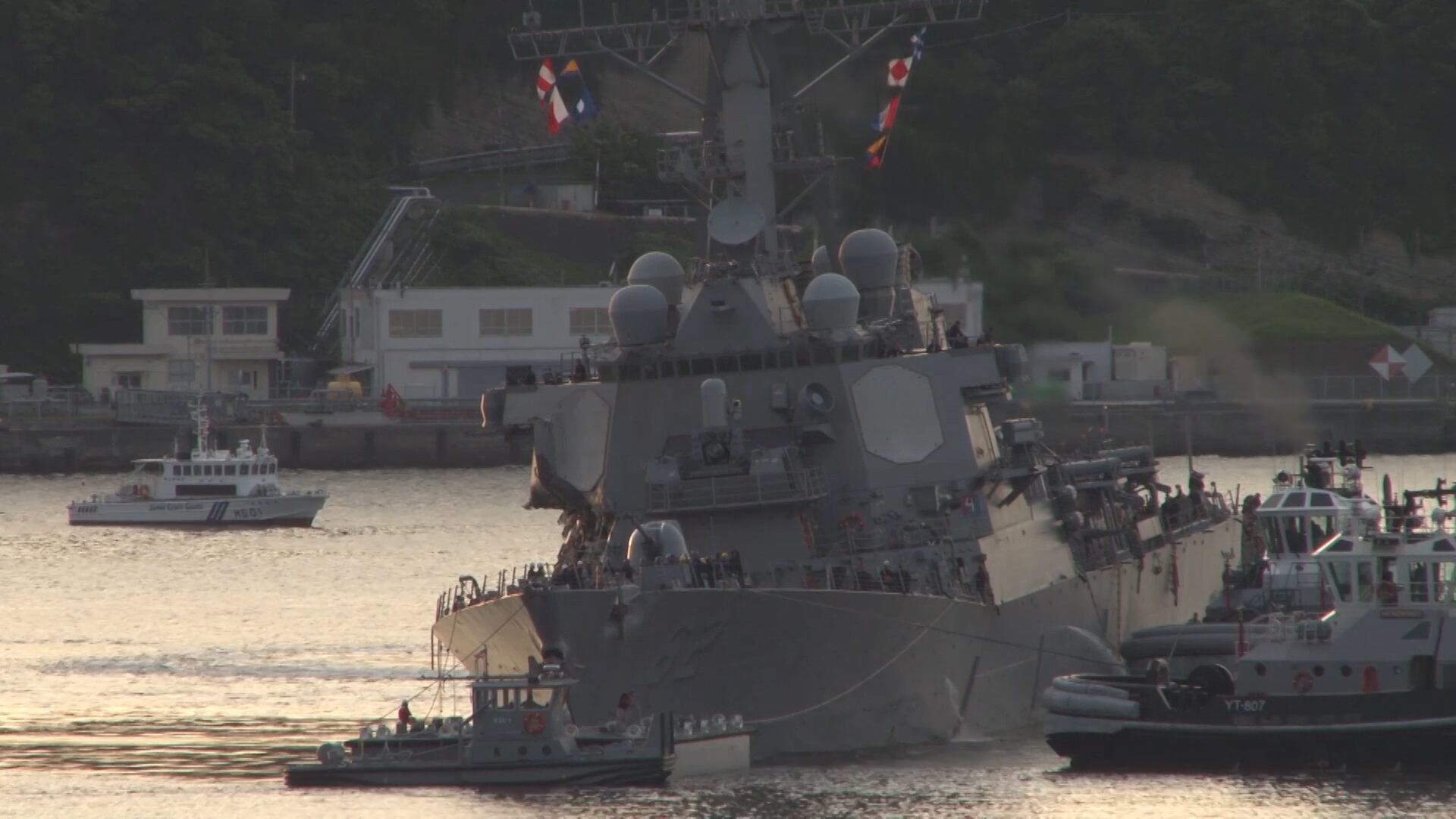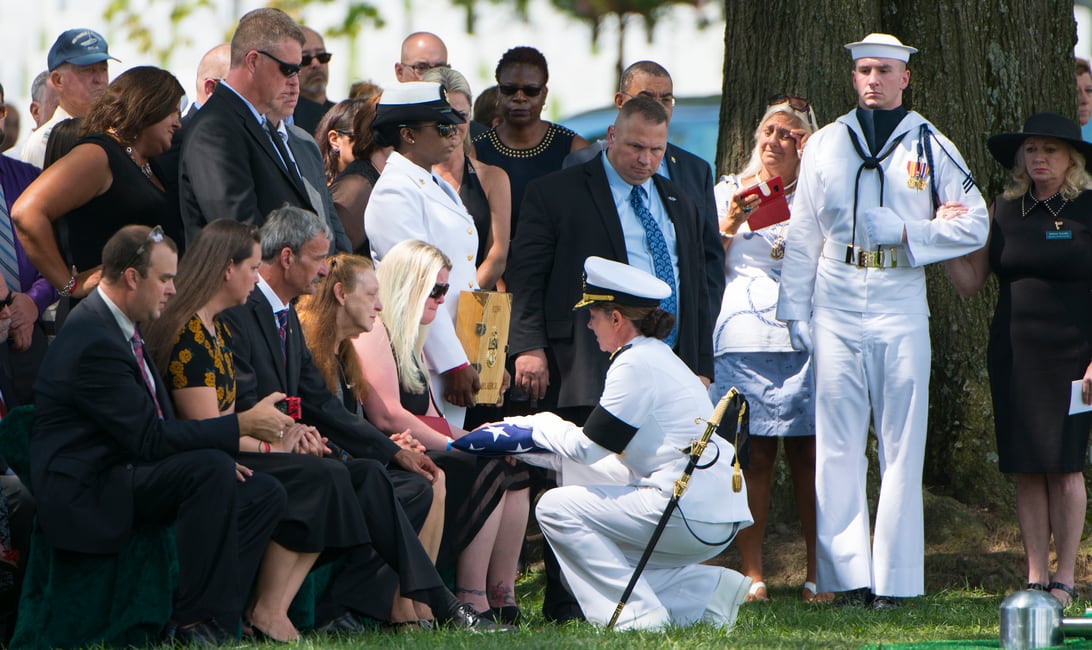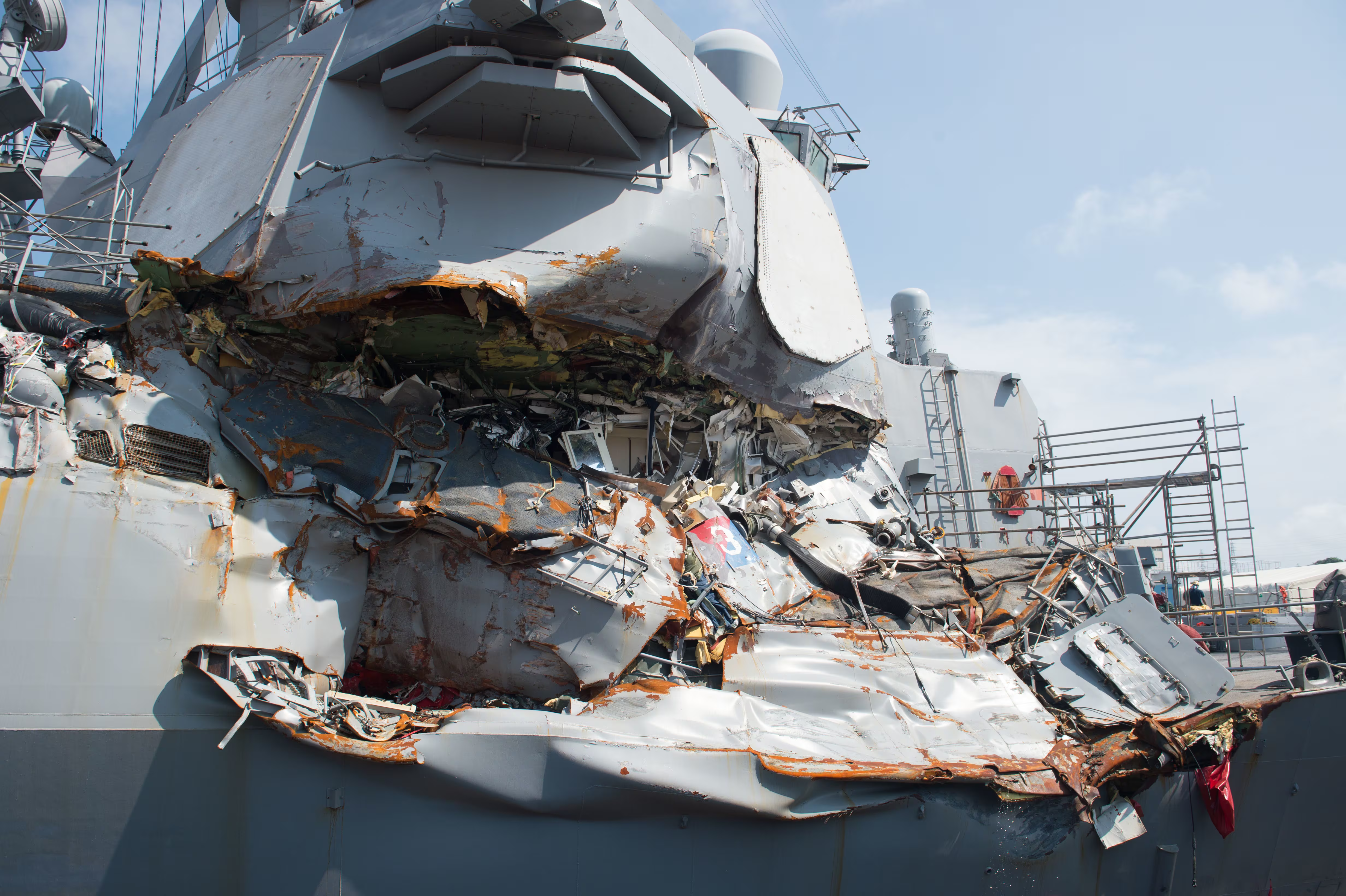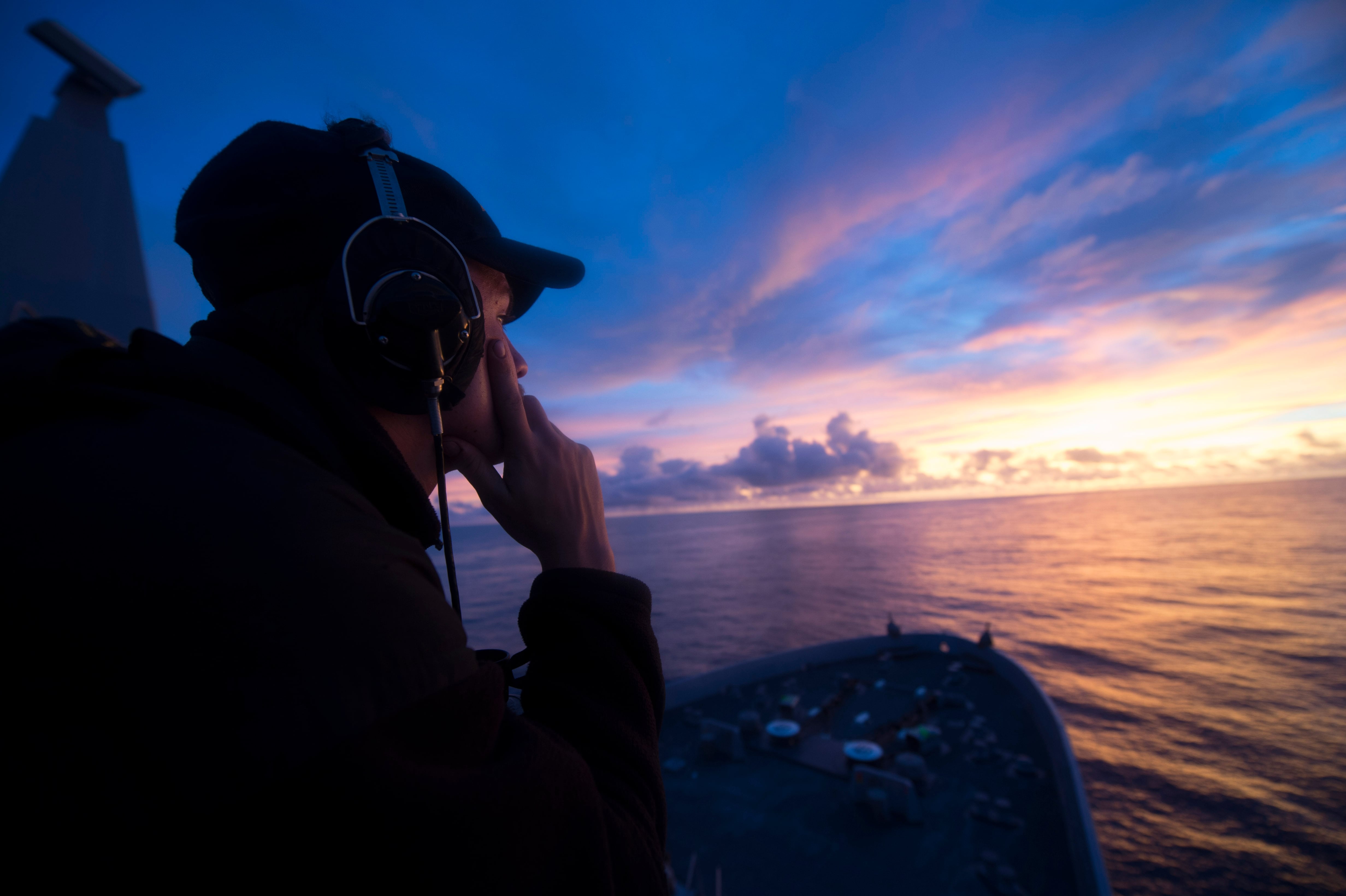As the Navy revamps its surface fleet in the wake of two fatal 2017 warship collisions, vessels that aren’t ready to deploy aren’t getting underway, U.S. Pacific Fleet commander Adm. John Aquilino told lawmakers Tuesday.
While preventing unprepared crews from leaving port might seem a normal precaution, a frenzied tempo of operations — coupled with a lack of training and equipment maintenance — didn’t stop warships from deploying in the Japan-based 7th Fleet’s area of operations in 2017, according to official probes into the collisions of the guided-missile destroyers Fitzgerald and John S. McCain in the Western Pacific Ocean.
In the aftermath of the disasters, Navy leaders repeatedly discussed the sea service’s “can do” culture, one that always strives to start and finish a mission, no matter the problems plaguing a vessel or its crew.
During the House Armed Services’ Readiness and Seapower Subcommittee hearing, Aquilino said that it’s OK for commanders to push back when they don’t think they’re ready to go.
“If the ships in the Pacific Fleet are not ready to safely sail, they don’t get underway, and that is my responsibility,” he said.
Aquilino said he has terminated two deployments for units that did not have the requisite training.
And his boss at U.S. Indo-Pacific Command, Adm. Phil Davidson, not only accepted Aquilino’s calls to withhold the crews from upcoming missions but has reduced “some of the operational demands in the Pacific,” Aquilino said.
“I took an entire strike group with the approval of Adm. Davidson,” Aquilino said. “We have reduced their requirement to remain ready longer in order to free up manning concerns and posture those forces to be able to be ready for the next cycle … give them the rest, the time they need to ensure they’re ready.”
Aquilino did not specify ships or units deemed unready to deploy but indicated that a cruise to the South Pacific was impacted and there also was one less vessel sent to the Navy’s Rim of the Pacific exercise last summer.
A career aviator, Aquilino said that the U.S. Pacific Fleet also “took risks with regard to surge forces, that if a crisis would have broken out, they would have needed additional training before they could have gone."
At the same time, Aquilino conceded that the “enemy gets a vote and those could easily come back if times were different.”
RELATED

Aquilino told lawmakers that the Navy over the past several years began planning deployment schedules based on estimates about how many vessels are ready to go.
“When each year the Navy produces a sourcing solution, or, here are the forces we’ll deploy in the next year, what we have pushed forward now over the past couple years is a supply-based model,” Aquilino said.
He said his Hawaii-based Pacific Fleet holds meetings three times per week about the current and long-term readiness of deployed forces, plus progress reports tracking warships entering or undergoing maintenance.
“If any of those indications show me I have a problem coming up, or one immediately identified that we were not aware of, I have a voice to the combatant commander,” Aquilino said.
Because Navy vessels remain in demand across the Western Pacific, Aquilino said that cancelling a warship’s deployment can trigger “very frank conversations" but all of his “subordinate commanders understand their responsibilities” and "that they owe me a voice” if they’re not ready to go.
Aquilino added that the practice of sounding off if a crew isn’t properly prepared to deploy is now being applied across the surface fleet worldwide.
The Government Accountability Office reported late last year that while improvements are being made in the Japan-based 7th Fleet, sailors are being overworked as a result and often lack proper rest.
RELATED

Both Aquilino and Norfolk-based U.S. Fleet Forces commander Adm. Christopher Grady reported that the Navy is 6,200 sailors short for at-sea billets.
Some of the shortfalls affect key personnel, such as senior quartermasters, but Aquilino said Navy leaders are working to ensure the ships that sail leave with everyone they need.
“When we push ships out, they must have the correct amount of those critical capabilities on board or they don’t go,” he said.
Grady added that when the Navy pushes “a ship out to do the basic phase, both Adm. Aquilino and I look very hard at that risk calculus if they are not fully manned.”
A career surface warfare officer who commanded the minesweepers Chief and Ardent, the destroyer Cole and Destroyer Squadron 22, Grady conceded that in past years Navy leaders leaned on technology to minimize a warship’s required manning levels and save money — high tech shortcuts that didn’t always work.
“Those decisions were taken for all the right reasons in the past to try and leverage technology to see whether we could get to a minimal or optimal manning construct,” he said. “As we sailed in that environment, we recognized that was too few.”
The typical destroyer was crewed by 240 sailors and officers in 2012 but that rose to 270 five years later, Grady said, and leaders hop to hike staffing to 318 in the coming years.
RELATED

In the wake of the McCain and Fitzgerald disasters, investigators began asking hard questions not only about the size of the crews and the amount of rest they received but also how well trained and led they were — especially junior officers on the bridge and in the warships’ Combat Information Centers.
An internal Navy review last year revealed ongoing concerns about the ship-handling skills of nearly 85 percent of the surface fleet’s junior officers, Defense News reported.
As with past problems, the Navy sought to partly remedy the seamanship shortfall with technology.
Grady told lawmakers that by the end of the year, all fleet concentration areas will have digital simulators that replicate Navy vessels and the service has identified 14 high-stress scenarios to drill officers so that they can avoid calamities at sea.
That prompted Rep. Elaine Luria, a retired surface warfare officer, to ask whether high technology fixes too often override an immersion in low tech fundamentals.
“We learned relative motion with a Popsicle stick and grease pencil on an SPA-25 radar repeater and we knew with the rigor of every three minutes putting this on a (maneuvering board), and looking out the window, we understood what we were looking at around us,” the freshman Democrat from Virginia said.
“I feel that we have advances in technology that are very important and very critical tools. But just from my personal experience, my observation is we’ve moved away from the absolute fundamentals behind the technology that we use.”
Grady said Navy leaders have found an appropriate mix of classroom, simulator and practical work for those going through SWO training.
RELATED

The discussion at one point turned to what surface warfare officers term “SWOS in a box.”
Established in 2003, the training program ushered junior officers into the surface warfare fleet with 21 CDs for computer-based instruction and an apprenticeship on the job at sea.
Luria pointed out that a generation of SWOS in a box grads are now instructing today’s junior officers.
But Grady said the Navy broke the chain of “unqualified people training unqualified people.”
He pointed to 10 “milestone checks” for SWOs that now span the ranks of ensign to captain, each of which threatening to derail a career.
“To this point, 5 percent of those folks have been asked to leave the command pipeline because they are not ready,” he said.
Geoff is the managing editor of Military Times, but he still loves writing stories. He covered Iraq and Afghanistan extensively and was a reporter at the Chicago Tribune. He welcomes any and all kinds of tips at geoffz@militarytimes.com.




